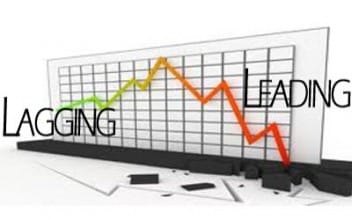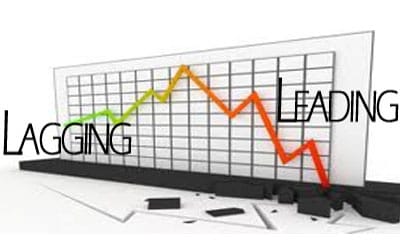In this series, we’ll be looking at two types of chart indicators, namely oscillators and momentum indicators. and how they can be used to analyse charts and evaluate trades. In order to know when and if these tools are going to work for you, you need to know their strengths and weaknesses.
 First off, we need to distinguish between the two main types of indicators – leading, and lagging. A leading indicator gives you a signal before the new trend or a reversal occurs. A lagging indicator gives you a signal after a trend has started, serving as a reminder that you may be missing out on a profitable trade opportunity.
First off, we need to distinguish between the two main types of indicators – leading, and lagging. A leading indicator gives you a signal before the new trend or a reversal occurs. A lagging indicator gives you a signal after a trend has started, serving as a reminder that you may be missing out on a profitable trade opportunity.
Leading indicators give you the opportunity to get on board with a new trend right from the off, potentially maximising your profits. However, they have one big problem – they aren’t always right. In fact, with leading indicators, you will tend to come across a lot of fake, misleading signals and breakouts that never materialise (also known as “fakeouts”).
Lagging indicators, on the other hand, tend not to give as many erroneous signals. Because they only give signals after a trend has commenced, the chances of error are significantly reduced. The only problem is that they could come too late for you to enter a profitable position on the trade. In many cases, the most dramatic gains of a trend happen in the first few bars, but if you use a lagging indicator, you could miss out on a big chunk of the profit.
These two types of indicators can be broadly defined as follows:
- Leading indicators or oscillators
- Lagging, trend-following, or momentum indicators
Although these two can support each other, more often than not they will conflict with each other. That’s not to say that you should use one or the other exclusively, but you have to be aware of the potential issues with each one, which we shall go into in more detail in forthcoming lessons.
Tradersdna is a leading digital and social media platform for traders and investors. Tradersdna offers premiere resources for trading and investing education, digital resources for personal finance, market analysis and free trading guides. More about TradersDNA Features: What Does It Take to Become an Aggressive Trader? | Everything You Need to Know About White Label Trading Software | Advantages of Automated Forex Trading









